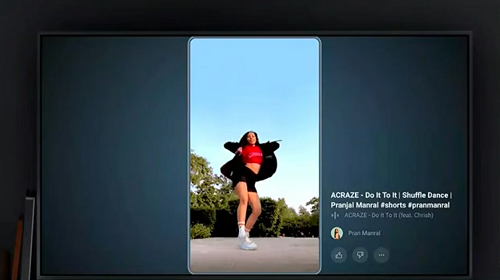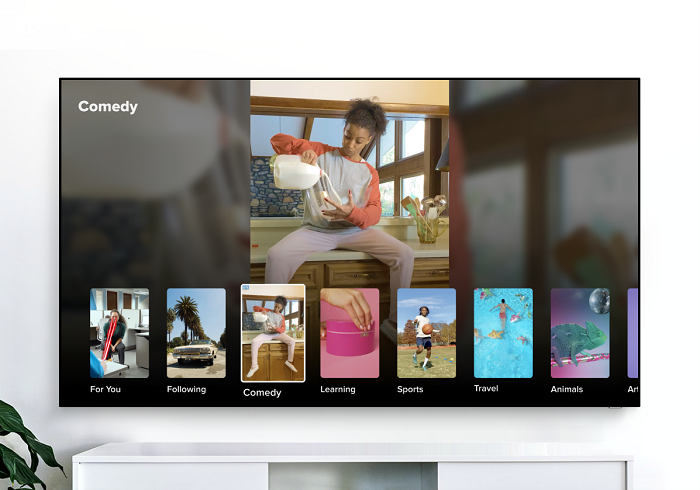YouTube Shorts has been a big hit for the platform, with the TikTok-like short-form video feed now driving over 30 billion daily views in the app.
And now, YouTube’s looking to better integrate Shorts into its expanded viewing options, with a dedicated Shorts player soon to be integrated into YouTube’s smart TV app, which will see its short clips hit the big screen in millions of homes around the world.
As reported by Protocol, YouTube is developing a new Shorts display for Connected TVs, which will frame Shorts clips in the middle of the big screen.

As reported by Protocol:
“A mock-up slide presented to the audience of Google’s partner event showed a vertical video at the center of the screen, with the video’s title, the name of the song used in the clip and quick access to up-and-down thumbs off to the side.”
That’ll provide a better viewing experience for Shorts on the big screen, helping to lean into content consumption trends.
Which TikTok is also trying to incorporate. Many LG and Samsung Smart TV owners can already access the TikTok TV app, which utilizes a similar presentation format to this new YouTube display.

Though as Protocol notes, YouTube has a major advantage over TikTok on this front, with YouTube’s app installed on virtually every Smart TV.
Indeed, Connected TV (CTV) viewing is now YouTube’s fastest-growing content surface, with over 120 million people now consuming YouTube content on their home TV screens each month.
That could see this facilitate huge new audience reach capacity for Shorts clips – and with 75% of YouTube users now engaging with Shorts in some form, it could help to amplify the format to a lot more people, making it a bigger content consideration for YouTube creators.
Which would be a big win for YouTube.
A key element of YouTube’s Shorts push is that Shorts can be used as a supplementary promotion for a creators’ main YouTube channel, where they can generate significant income via YouTube’s Partner Program.
As TikTok well knows, monetizing short-form video is hard, because you can’t insert ads into short clips. That means that creators have less capacity to earn income from their TikTok or Shorts clips – but by using it as a means to drive viewers back to their main YouTube channel, that can be a much more viable monetization pathway.
Which could, eventually, see more TikTok stars take their talents to YouTube instead.
This is a key existential concern for TikTok, with creators already expressing their frustration at its fluctuating Creator Fund payments, while the structure of the app itself doesn’t lend itself to building a following, with the focus more on surfacing the latest trending clips, from any account.
Maybe, like Vine before it, TikTok will eventually lose its top stars to greener pastures instead. At present, most of the top names seem to be content at posting to TikTok and other apps, with TikTok more of a cross-promotion opportunity. But the signs suggest that many are shifting focus away from TikTok as a primary channel, which could lead to further concerns down the road.
Along with the expansion of Shorts to the TV app, YouTube’s also adding new YouTube Music features for connected TVs, including the ability to browse playlists, and add songs and albums to your YouTube Music library directly from the TV screen.
YouTube’s also working on a new ‘Mosaic Mode’, which will enable subscribers to display up to four live feeds on screen at one time, with the screen divided into quadrants.
Which, I can only imagine, will further scramble kids’ attention spans, and befuddle adults, as youngsters learn to take in four concurrent TV streams at one time.
Is that the future of media consumption? I guess, in many ways, we’re already consuming multiple content feeds at once, with the TV playing as you scroll through your mobile device, and potentially view videos and other content on two streams at once. What’s another one or two inputs in that mix?
I mean, soon you’ll be in the metaverse, watching a virtual video screen, as notifications pop-up at the side of your vision, or you may be wearing AR glasses that add another attention surface into the mix.
The evolution of human attention is happening before our eyes, and in this sense, YouTube’s multi-screen presentation probably makes a lot of sense.



